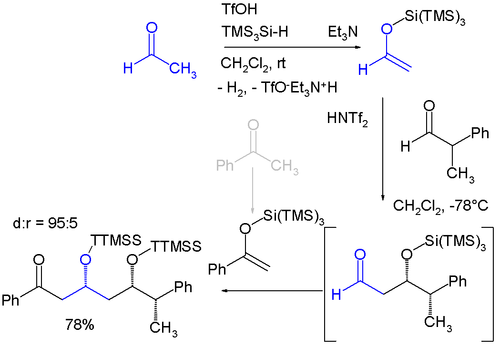Reference




OpenAI's Answer
Trimethylsilyl acetylene (TMS acetylene) is a versatile reagent used in various applications within organic chemistry. Here are some of the key applications:
-
Carbon-Carbon Coupling Reactions: TMS acetylene is often used in carbon-carbon coupling reactions, such as the Sonogashira coupling, which facilitates the formation of aryl-alkyne bonds. This reaction is critical in the synthesis of complex organic molecules, including pharmaceuticals and natural products.
-
Synthesis of Substituted Alkynes: It is a valuable reagent for the introduction of terminal acetylene groups into organic molecules, which can then be further modified to create a wide range of substituted alkynes.
-
Heterocyclic Chemistry: TMS acetylene is used in the synthesis of various heterocycles, which are compounds containing a ring structure composed of different elements. These heterocycles are essential in drug development and materials science.
-
Nucleophilic Reactions: It acts as a nucleophile in Friedel-Crafts type acylation and alkylation reactions, allowing the formation of new bonds by attacking electrophilic centers in organic molecules.
-
Organometallic Chemistry: TMS acetylene serves as a ligand in organometallic complexes, which are compounds that include metal atoms bonded to organic groups. These complexes are important in catalysis and the development of new synthetic methods.
-
Preparation of Other Reagents: For example, TMS acetylene can be used to prepare trimethylsilanyl-propiolic acid ethyl ester by reacting with carbonochloridic acid ethyl ester. This type of transformation is useful in developing other synthetic intermediates.
-
Cyclization Reactions: TMS acetylene can be cyclized under specific conditions to form larger aromatic compounds such as tris-(trimethylsilyl)-benzene.
-
Protection of Functional Groups: It is employed in the protection of functional groups during organic synthesis. The trimethylsilyl group can be introduced to protect an acetylene functionality, which can be removed at a later stage of the synthesis.
For more detailed information, you can check the following resources:
- Wikipedia on Trimethylsilylacetylene
- ChemicalBook on Trimethylsilylacetylene
- Organic Syntheses Procedure
These applications demonstrate the critical role that TMS acetylene plays in the development of complex organic structures and modern synthetic methodologies.
Follow Up
Related
Why are methane and other hydrocarbons found in the atmospheres of Jupiter and Saturn?
What is the story behind 'Two Seconds' and her interactions with Eun-pyo?
What materials did Gilbert test to determine if they were 'elektrics'?
What supporting documents are required for a B1/B2 visa interview?